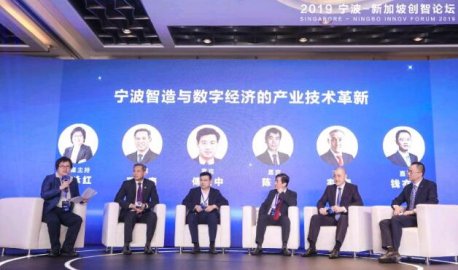Source: Hong Kong 01
from October 10th to 11th, Sino -US trade high -level negotiations restarted after a few months of deadlock. The results of the negotiation seemed to exceed the expectations of the outside world. US President Donald Trump met with the Deputy Prime Minister of the State Council and the leader Liu He, and then decided to suspend the increase in tax rates worth 250 billion yuan worth of Chinese goods to 30 to 30.%, This is a tariff measure that was scheduled to take effect on October 15. According to the information disclosed by China's officials, the two parties have made substantial progress in the fields of agriculture, intellectual property protection, exchange rates, financial services, expanding trade cooperation, technological transfer, and dispute resolution; Trump saidThe first phase of the agreement said that it may be in Chile and the Chinese President of Chile next month ... meet and sign the final document. In the new progress, the exchange rate agreement is focused on In the content of the substantive progress of this negotiation, exchange rates and financial services were first mentioned.US Treasury Secretary Steve Mnuchin said after the meeting that the negotiations have been completed, and said that once the first phase of the Sino -US trade agreement is completed, he will cancel the United States' exchange rate to China. Obviously, the exchange rate is a major theme of this negotiation of China and the United States, and it is likely to be reflected in this first phase agreement.Although the specific content has not been disclosed now, Mnuchin has always asked to raise the market transparency of the Bank of China to interfere with the RMB and maintain the stability of the RMB to the US dollar.The purpose of the United States to join the exchange rate in the trade agreement is to hope that the RMB will appreciate against the US dollar, thereby promoting US exports and reducing trade deficit. In August of this year, the U.S. tariff measures on China have been upgraded again. At the end of August, the RMB exchange rate broke 7 for the first time. Trump furiously said that China manipulated the exchange rate.For the first time. The trade war began in Trump's dissatisfaction with the Sino -US trade deficit. Trump also repeatedly stated that the US dollar was too strong and criticized the Fed's monetary policy.How will the forthcoming exchange rate agreement affect the future RMB and the US dollar? The square agreement cannot happen Speaking of the exchange rate agreement, the external reference items are firstly the square agreement signed by the United States and Japan in the 1980s.After the signing of the agreement, five developed countries in the United States, the United Kingdom, France, and West Germany jointly intervened in the foreign exchange market, which led to the continued depreciation of the US dollar, and the Japanese economy has been lost for 30 years since then. Since the start of the Sino -US trade war, the US -Japan trade war has been the most commonly used analogy in the outside world.The current U.S. negotiation leader and the White House trade representative Robert Lighthizer is indeed a leader in negotiations with Japan.However, the signing rate agreement between China and the United States cannot be the second square agreement. After a few years of signing the square agreement, the yen appreciated by 260%in the late 1980s. The sharp appreciation of Japan has made Japanese financial asset bubbles crazy accumulation. The stock market and housing market are extremely prosperous.You can buy the entire United States, but the economy has changed from reality and eventually collapsed. In this process, the appreciation of the yen is under pressure from the United States. At the same time, the Japanese government has a mistake in opening currency easing policies. In addition, the US -Japan trade war loses the competitiveness of Japanese companies and has caused recession.At that time, the Japanese economy's exports, especially the export of US exports, were extremely high, and the industrial structure of Japan was relatively single.Japan is limited by its own strength and has no room for bargaining with the United States in signing the square agreement. Looking back at today's China, whether it is economic or economic structure, it is not Japan 30 years ago.Not only does China have a relatively complete industrial industry chain, but also the economy is stimulated by domestic demand, the market is huge, and the international revenue and expenditure are stable.The Sino -US exchange rate agreement is likely to make the renminbi appreciate, but it is impossible to get out of control like Japan in that year. Beijing enjoy the appropriate appreciation of the renminbi From another perspective, if the RMB appropriate appreciation after the Sino -US exchange rate agreement may help the internationalization process of the RMB, which is the strategic direction of Beijing in currency. When the RMB exchange rate broke the 7, there was an increasing concern of China's capital outflow.If the renminbi appreciates on the basis of the present, it will further improve its attractiveness as a foreign exchange.After experiencing reform in 2015, I have recently experienced the reform of the loan market quotation interest rate (LPR), and the RMB is entering marketization and internationalization in steps. At present, the proportion of RMB in global currency reserves is less than 2%, and slight appreciation may stimulate and accelerate the growth of this proportion.This means that more economies believe that RMB has the ability to maintain value, thereby increasing the share of RMB in currency reserves.If this agreement eventually appreciates the appreciation of the renminbi, it is the result of Beijing.


